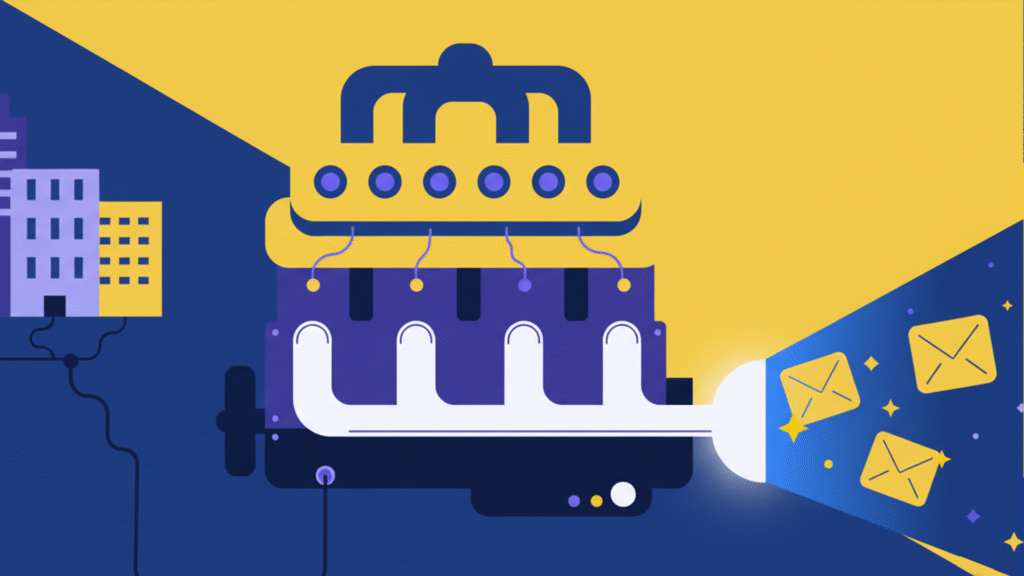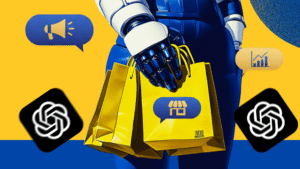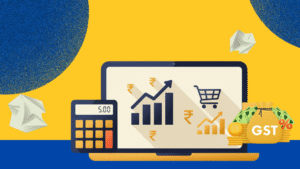Is your email marketing smart enough to know what your customers actually want?
For most small and medium businesses, email marketing is still about blasting offers or newsletters to the same list.
That’s not marketing anymore that’s noise.
AI is changing that.
It’s helping businesses send the right message to the right person at the right time without guessing.
Let’s break down how AI-powered personalization works and how small businesses in India and beyond can start using it today.
Why AI and Email Marketing Are a Perfect Match
Traditional email marketing depends heavily on assumptions.
You segment audiences manually, guess which subject line will perform better, and hope your timing clicks.
AI eliminates the guesswork.
It analyzes user behavior, purchase history, browsing patterns, and engagement data in real time.
Then it automatically creates email flows that feel tailor-made for each person.
Imagine having 10,000 customers but still sending every one of them a message that feels written just for them.
That’s what AI enables: personalization at scale.
The Real Power of AI in Personalization
AI can now predict customer intent based on simple signals what they clicked, when they opened your email, how long they viewed it, or what device they used.
These insights help you:
- Send more relevant offers and recommendations.
- Adjust timing to when each user is most active.
- Personalize tone and message length.
- Even predict which users are about to unsubscribe or buy again.
Instead of sending one-size-fits-all content, you can use machine learning models to decide what each user should see next.
It’s like having a marketing assistant who knows your audience’s preferences better than you do.
AI Personalization Tactics SMBs Can Start With
You don’t need enterprise-level tools or a data science team to start with AI.
even affordable platforms now include built-in AI features that make personalization simple.
here are a few strategies small businesses can start with right away:
1. Predictive Segmentation
Instead of grouping customers by basic factors like age or gender, AI creates dynamic segments based on real behavior who clicks offers, who browses but doesn’t buy, who reopens old campaigns.
This lets you send more focused messages that actually convert.
2. Smart Send Times
AI studies when your customers open emails most often and automatically adjusts delivery time.
No more guessing if Tuesday mornings or Friday evenings work best.
Each subscriber gets messages when they’re most likely to read them.
3. Content Personalization
You can train AI to match email content with user interests.
For example, if someone browses women’s shoes on your site, the next email they receive can showcase new arrivals or a size guide.
That relevance boosts click-through rates instantly.
4. Product Recommendations
AI looks at browsing and purchase history to predict what customers might want next.
E-commerce stores use this daily to increase upsells and cross-sells without sounding pushy.
5. Subject Line Optimization
AI tools analyze which subject lines perform better based on tone, length, and keywords.
They can even A/B test automatically and select the winning version before sending it to the rest of your list.
6. Automated Drip Campaigns
Drip sequences powered by AI adapt automatically.
If someone skips an email, it can adjust tone or timing.
If they click a product link, the next email might contain a personalized discount or tutorial.
Real Example: How AI Email Personalization Works in Practice
Let’s take a small Indian fashion brand as an example.
They have 5,000 subscribers and typically send one weekly offer to everyone.
With AI-driven personalization, here’s what changes:
- The system learns that one group opens emails on mobile in the evening, while another checks during work hours on desktop.
- It notices some users browse festive collections but never buy.
- AI automatically sends those users a “Festive Lookbook” email with styling tips instead of a plain discount message.
- For loyal buyers, it sends early-access offers.
The result?
Higher open rates, more clicks, and fewer unsubscribes.
Not because the business changed what it sells, but because it changed how it communicates.
How AI Email Tools Make This Simple
You don’t have to code or build models to use AI.
Tools like Mailchimp, HubSpot, Brevo (formerly Sendinblue), and Klaviyo have built-in AI features.
They can recommend send times, auto-generate subject lines, and even adjust email frequency.
For example, Mailchimp’s “Send Time Optimization” studies millions of campaigns to predict the best delivery window for your audience.
klaviyo uses AI to analyze purchase behavior and trigger hyper-personalized product emails.
brevo’s AI can suggest ideal message tone or generate better-performing content blocks automatically.
Even if you’re not a tech expert, these tools let you apply machine learning in a few clicks.
Challenges SMBs Should Be Aware Of
AI isn’t magic it still depends on data quality.
If your email list is outdated or your data isn’t structured properly, AI will make poor predictions.
Start by cleaning your list and ensuring every contact is verified and engaged.
Also, don’t lose the human touch.
AI should enhance personalization, not make it robotic.
People still connect with emotion, authenticity, and stories.
Use AI to gather insights, then write like a human.
Lastly, ensure compliance with privacy laws.
Always use data responsibly and get explicit consent for tracking and personalized content.
How to Get Started
If you’re new to AI-driven personalization, start small:
- Choose one AI-enabled email platform.
- Activate features like send-time optimization and product recommendations.
- Run an A/B test between a generic campaign and an AI-personalized one.
- Measure open rate, click rate, and conversions.
- Refine content and audience segments over time.
Within weeks, you’ll see how much precision personalization adds to your campaigns.
The Future of AI Email Marketing
The next phase goes beyond personalization it’s about predictive interaction.
AI will soon generate real-time emails that change content dynamically based on user activity.
For example, if someone abandons their cart, the email they get an hour later could automatically show that same product, plus an extra offer if they don’t buy within 24 hours.
It’s not just about sending emails anymore.
It’s about creating living campaigns that evolve as buying intents do.
Final Thoughts
AI isn’t replacing email marketers it’s empowering them.
It gives small businesses the tools to act with the precision of big brands.
The faster you integrate AI, the more edge you’ll have in engaging customers who expect relevance.
At GoSeen, we help small and medium businesses design AI-backed marketing systems that personalize at scale without losing the human voice.
From setup to strategy, we focus on making technology feel natural and customer-centric.
Because the future of marketing isn’t automation it’s meaningful personalization powered by smart data.
FAQs
1. What is AI-driven email marketing?
It’s the use of artificial intelligence to personalize and automate email campaigns based on customer behavior, preferences, and engagement data.
2. How does AI improve email personalization?
AI analyzes data such as clicks, purchases, and browsing patterns to predict what each user wants, improving open and conversion rates.
3. Do I need expensive tools to use AI for emails?
No, platforms like Mailchimp, Brevo, and HubSpot offer built-in AI personalization features even for small businesses.
4. Can AI help reduce unsubscribe rates?
Yes, AI optimizes timing, frequency, and relevance, which keeps audiences engaged and reduces opt-outs.
5. What’s the biggest mistake to avoid with AI in email marketing?
Relying completely on automation. AI should guide your strategy, but your human tone and authenticity make the real difference.




